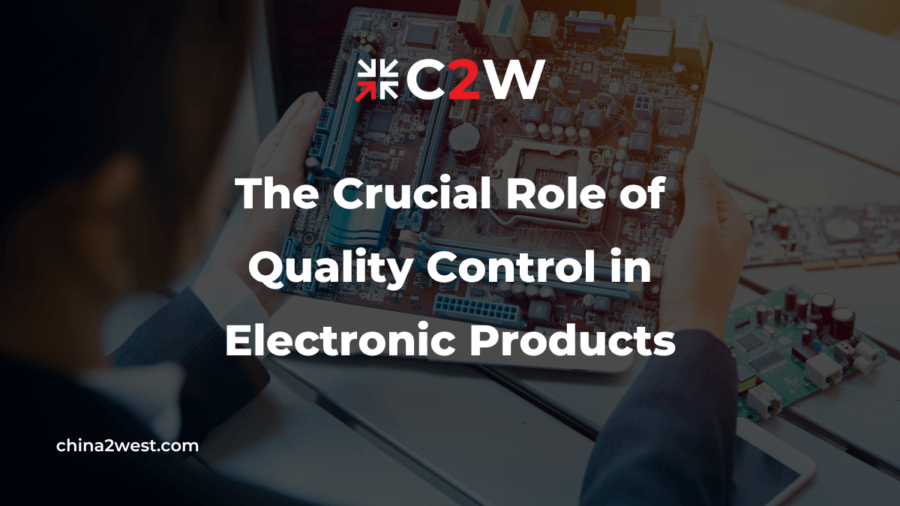In an era dominated by technological advancements, the electronics industry continues to expand rapidly. However, the key to sustaining this growth and ensuring consumer satisfaction lies in rigorous quality control (QC) measures. Quality control in electronic products not only enhances product reliability but also builds a brand’s reputation for excellence. This comprehensive guide will explore the importance of QC in the electronics sector and outline effective strategies to uphold the highest quality standards.
Quality Control in Electronics
Quality control within the realm of the electronics industry encompasses a set of deliberate processes and measures designed to verify and uphold the integrity of electronic products throughout their production lifecycle. It encompasses a comprehensive approach that includes the evaluation of materials, scrutiny during manufacturing phases, and exhaustive final testing to ensure that each product not only adheres to predetermined quality benchmarks but also aligns with safety standards. Central to these efforts are various testing methodologies tailored to electronic goods, ranging from stress tests that simulate extended use, to compatibility assessments ensuring products interact seamlessly with other devices.
Additionally, quality control in electronics involves a proactive stance towards identifying potential sources of malfunction or degradation in product performance. This preemptive approach aids in mitigating risks before products reach consumers, thereby safeguarding against potential recalls or consumer dissatisfaction. Integral to this process is the collaboration between engineers, quality control specialists, and production teams who collectively work to fine-tune production techniques and implement corrective actions when necessary. Through such rigorous and systematic quality control measures, the electronics sector strives to achieve a level of product reliability and safety that meets the high expectations of today’s tech-savvy consumers and regulatory bodies alike, all while navigating the complexities inherent in the manufacturing of electronic devices.
5 Key Elements of Quality Control in Electronics
Quality control (QC) in electronics is a critical aspect of manufacturing and production, ensuring that products meet specified standards and function as intended. Key elements of QC in the electronics industry include:
1. Design and Development Control
Quality control starts right from the design phase. Design and development control involves setting clear quality standards and specifications that are aligned with customer requirements and industry regulations. This stage includes rigorous feasibility studies, design reviews, and validation tests to ensure that the design is robust enough to proceed to production. Tools like Failure Modes and Effects Analysis (FMEA) and Design for Manufacturability (DFM) are used to identify potential problems early on and integrate quality into the design process.
2. Process Control
Once the design is set, the focus shifts to manufacturing processes. Process control is vital to maintain product quality and consistency. This involves the implementation of controlled processes and procedures to ensure that every step of the manufacturing process is carried out under specified conditions. Key aspects include setting up process validations, calibrations, and regular equipment maintenance schedules. Statistical Process Control (SPC) techniques are also used to monitor variability and detect deviations from the process that could affect quality.
3. In-Process Inspection and Testing
In-process inspection and testing are crucial for catching defects and non-conformities as they occur during the manufacturing process. This proactive approach allows for immediate corrections and reduces the cost and time associated with reworking or scrapping defective products. Typical in-process checks include visual inspections, electrical testing, and functional testing at various stages of the assembly line. This not only helps in maintaining the integrity of the production process but also ensures that components and assemblies meet specified quality standards.
4. Final Product Testing
Before any electronic product hits the market, it undergoes thorough final product testing to ensure complete compliance with technical specifications and performance criteria. This includes a series of electrical, mechanical, and environmental tests designed to simulate real-world operating conditions. Final product testing serves as a critical checkpoint to catch any issues that might have slipped through previous QC stages and is essential for maintaining consumer trust and product reliability.
5. Documentation and Traceability
Documentation and traceability are the backbones of effective quality control systems in electronics manufacturing. Detailed records of every aspect of the design, development, and production process are crucial for auditing purposes and in case of product recalls. Traceability involves tracking every component back to its source, providing a clear audit trail from the finished product all the way back to raw materials. Such practices are essential for identifying the root causes of defects and ensuring continuous improvement in product quality.
Overcoming Challenges in Electronic Product Quality Control
Navigating the complexities of electronic product quality control demands strategic foresight to mitigate potential obstacles that may compromise standards. One of the primary challenges is achieving a harmonious balance between managing costs and upholding the rigorous quality consumers expect. This delicate equilibrium necessitates innovative production methodologies that do not sacrifice quality for cost-effectiveness. Additionally, the intricate nature of global supply chains poses significant hurdles. Ensuring every component sourced from various parts of the world meets quality expectations requires robust vetting and monitoring systems, often stretching resources thin.
Rapid technological evolution further complicates quality control efforts. What was considered cutting-edge a short while ago quickly becomes obsolete, making it challenging for QC processes to stay current without constant updates and adaptations. This fast-paced change demands agility and a willingness to embrace new technologies that can better track, analyze, and enhance quality throughout the product lifecycle.
Addressing these challenges head-on involves a multifaceted approach. It’s essential for brands to invest in advanced quality management systems that integrate seamlessly with production operations, enabling real-time detection and correction of faults. Equally important is fostering a culture of quality that permeates every aspect of the organization, from the procurement of raw materials to the final stages of product testing. If you’re looking to enhance your electronics manufacturing processes with top-tier quality control measures, don’t hesitate to reach out. Contact us today to learn how we can assist you in achieving excellence in every product.




